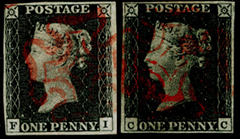 First Issues Collectors Club
of stamps and philatelic material
First Issues Collectors Club
of stamps and philatelic material
Home - Catalog - Categories - Index - Journal - Exhibits - Auctions - Forgeries - Join
 First Issues Collectors Club
of stamps and philatelic material
First Issues Collectors Club
of stamps and philatelic material
Home - Catalog - Categories - Index - Journal - Exhibits - Auctions - Forgeries - Join
| first issues > countries > germany |
| Europe | 21, a-b |
13½x14½, no wmk, typographed, center embossed
Printed at the Prussian State Printing Office, renamed the Reichsdruckerie (Imperial Printing Office) in 1879.
| Description | Scott# | SG# | Mi# | Y&T# | ||
|---|---|---|---|---|---|---|
| ¼ groschen violet | 1 | 1 | 1 | 1 | ||
| ⅓gr green | 2 | 2 | 2a, 2b | 2 | ||
| ½gr red orange | 3 | 3 | 3 | 3 | ||
| ½gr orange-yellow | 3c | 4 | 14 | 3a | ||
| 1gr rose | 4 | 5 | 4 | 4 | ||
| 2gr ultra | 5 | 6 | 5 | 5 | ||
| 5gr bister | 6 | 7 | 6 | 6 | ||
| 1 kreuzer green | 7 | 8 | 7 | 7 | ||
| 2kr orange | 8 | 9 | 8 | 8 | ||
| 2kr red-orange | 8a | 10 | 15 | |||
| 3kr rose | 9 | 11 | 9 | 9 | ||
| 7kr ultra | 10 | 12 | 10 | 10 | ||
| 18kr bister | 11 | 13 | 11 | 11 |
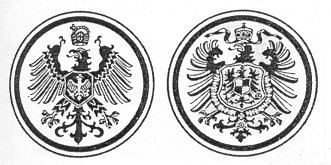 |
small and large shields |
The series was embossed with an eagle and small shield, the 1872 issues (Sc14-26) with an eagle and large shield.
Germany's first national definitive followed on from a complex of issues for individual states and combinations thereof. Although it was a single design for the whole of Germany, two currencies were in use and so the stamp denominated in groschen was for the north and kreuzer for the south.
Changes of Administration
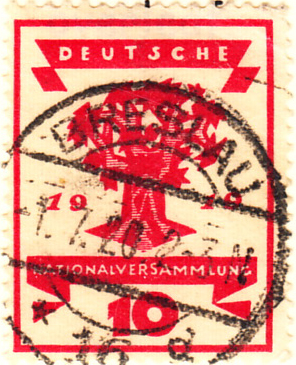 |
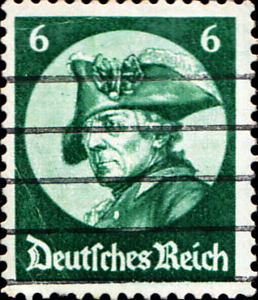 |
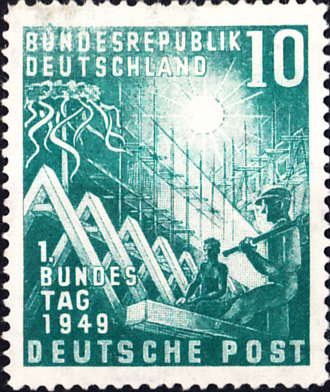 |
Weimar Republic |
Third Reich |
West Germany |
| 1919 Sc105 SG107 | 1933 Sc398 SG490 | 1949 Sc665 SG1033 Opening of W. German Parliament |
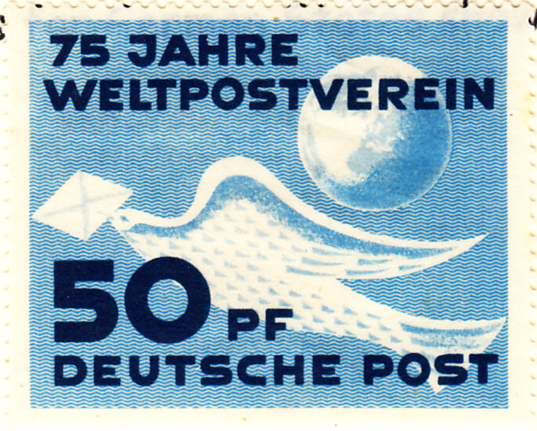 |
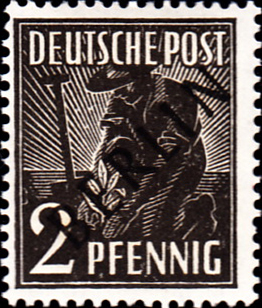 |
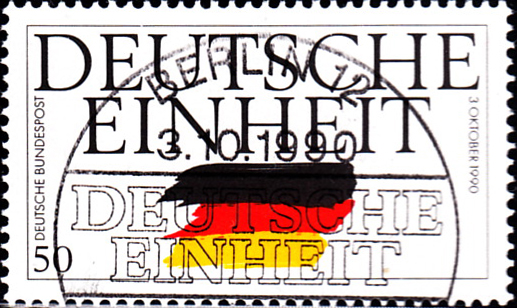 |
East Germany |
Berlin |
Germany Reunified |
| 1949 Sc48 SG-E1 75th anniv. UPU |
1948 Sc-9N1 SG-B1 | 1990 Sc1612 SG2326 Sc1612 |
At the end of WW1, the German Revolution caused the Emperor and German princes to abdicate. A republic was formed under the Weimar Constitution. The early 1920s were prosperous and occasionally decadent, but following the 1929 depression, conditions and stability deteriorated, allowing Hitler to take power. At the end of WW2, Germany was occupied by the victorious powers, the area controlled by Russia became East Germany and that of GB, France and the US became West Germany: Berlin remained divided and had its own stamps. There were many occupation issues (both by- and of-) and these will be covered separately. In 1990, as the Eastern Bloc crumbled, Germany was reunited: the stamp shown has a neat Berlin postmark from the first day of issue.